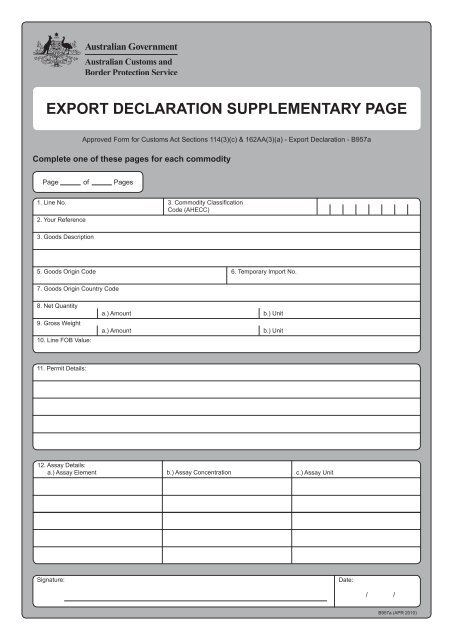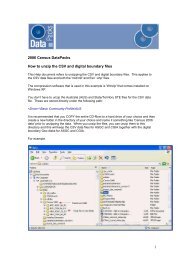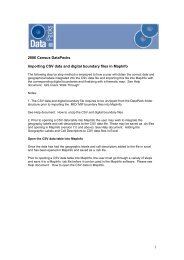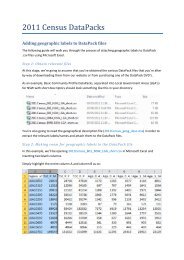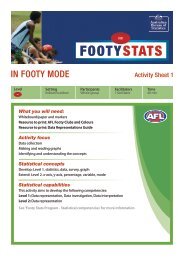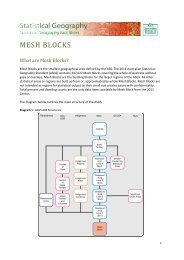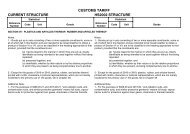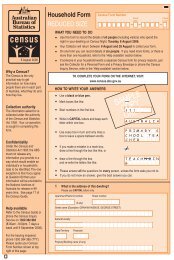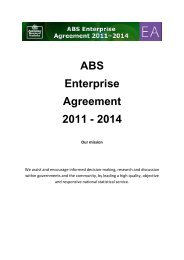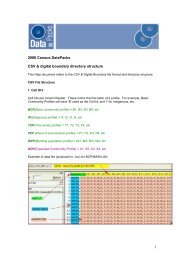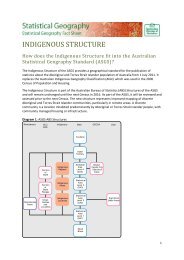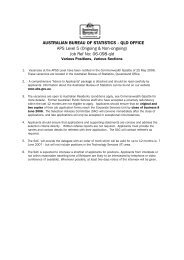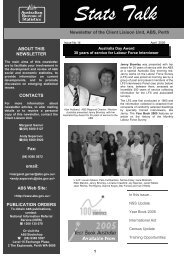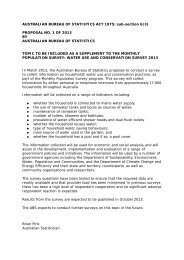B957a - Australian Customs Service
B957a - Australian Customs Service
B957a - Australian Customs Service
Create successful ePaper yourself
Turn your PDF publications into a flip-book with our unique Google optimized e-Paper software.
EXPORT DECLARATION SUPPLEMENTARY PAGE<br />
Approved Form for <strong>Customs</strong> Act Sections 114(3)(c) & 162AA(3)(a) - Export Declaration - <strong>B957a</strong><br />
Complete one of these pages for each commodity<br />
Page of Pages<br />
1. Line No. 3. Commodity Classification<br />
Code (AHECC)<br />
2. Your Reference<br />
3. Goods Description<br />
5. Goods Origin Code 6. Temporary Import No.<br />
7. Goods Origin Country Code<br />
8. Net Quantity<br />
9. Gross Weight<br />
10. Line FOB Value:<br />
a.) Amount<br />
a.) Amount<br />
b.) Unit<br />
b.) Unit<br />
11. Permit Details:<br />
12. Assay Details:<br />
a.) Assay Element<br />
b.) Assay Concentration<br />
c.) Assay Unit<br />
Signature:<br />
Date:<br />
/ /<br />
<strong>B957a</strong> (APR 2010)
Notes for Completing an Export Declaration Supplementary Page<br />
1. Line No (mandatory)<br />
A supplementary page must be completed for each separate<br />
commodity as identified by the AHECC code (see Item 3).<br />
2. Your Reference<br />
This reference must be the same as the Export Declaration<br />
header page (the B957 page, Item 3.)<br />
3. Commodity Classification (mandatory)<br />
<strong>Australian</strong> Harmonized Export Commodity Classification<br />
(AHECC) code is a statistical classification for the particular<br />
commodity being exported. This code may be obtained from<br />
<strong>Customs</strong> & Border Protection.<br />
4. Goods Description<br />
Invoice or commercial description of the goods.<br />
5. Goods Origin Code (mandatory)<br />
The code used to identify the <strong>Australian</strong> state of origin (or<br />
foreign) of goods, as listed below:<br />
NSW: AU-NS<br />
TAS: AU-TS<br />
VIC: AU-VI<br />
NT: AU-NT<br />
QLD: AU-QL<br />
ACT: AU-CT<br />
SA: AU-SA<br />
WA: AU-WA<br />
FOREIGN: YY-FO<br />
6. Temporary Import No (Mandatory if the AHECC is for<br />
the export of goods originally imported on a temporary<br />
basis).<br />
7. A number or code that identifies goods described by<br />
section 68(1)(j) of the <strong>Customs</strong> Act 1901.<br />
Goods Origin Country Code (mandatory if item 5 is<br />
“Foreign”)<br />
The name of the primary country where the goods were<br />
manufactured.<br />
8. Net Quantity<br />
The net quantity of goods is described in terms of the units<br />
prescribed in the AHECC, (e.g. KG, T, NO). If the unit<br />
prescribed by the AHECC is ‘NR’, the quantity details are not<br />
required, but ‘NR’ must be shown in the units box. Net quantity<br />
should not include the weight of any additional packaging.<br />
9. Gross Weight<br />
The gross weight is, in effect, the shipping weight of the goods,<br />
It should include the weight of any immediate packaging but<br />
not the weight of the container. Show weight in grams (G),<br />
kilograms (KG) or tonnes (T).<br />
10. Line FOB Value<br />
The free on board (FOB) value of the goods quoted on this<br />
export declaration line, including all costs incidental to the sale<br />
and delivery of the goods on to the exporting vessel/aircraft.<br />
No discount given is to be deducted from the true value of the<br />
goods. The FOB value should be expressed to the nearest<br />
dollar. It should be noted that FOB does not include oversea<br />
freight and insurance.<br />
The FOB values of samples must be shown as the market<br />
value of the goods as if they were for sale.<br />
The combined FOB value of the lines must equal the total FOB<br />
value on the header page (B957).<br />
11. Permit Details (Prefix/Permit No)<br />
A wide range of goods is prohibited from exportation unless an<br />
export permit is obtained from the appropriate agency. Details<br />
of export restrictions are contained in various Commonwealth<br />
laws and are outlined in the <strong>Australian</strong> <strong>Customs</strong> and Border<br />
Protection <strong>Service</strong> Manual Volume 12. Further advice can be<br />
obtained from your legal adviser, <strong>Customs</strong> Agent, etc, or the<br />
<strong>Australian</strong> <strong>Customs</strong> and Border Protection <strong>Service</strong>. Input the<br />
permit number given by the relevant permit issuing authority.<br />
Each permit issuing authority has it’s own permit prefix.<br />
The correct prefix must be included for all permits.<br />
12. Assay Details (Element/Concentration/Unit)<br />
A chemical test to determine the content of a particular<br />
element. Only input details if goods are minerals requiring an<br />
assay. Please see the AHECC for more information regarding<br />
this item.<br />
Element Symbol Unit Description<br />
Gold AU GPT (Grams per Tonne)<br />
Silver AG GPT (Grams per Tonne)<br />
Copper CU PER (Percentage)<br />
Lead PB PER (Percentage)<br />
Platinum PT PER (Percentage)<br />
Nickel NI PER (Percentage)<br />
Tin SN PER (Percentage)<br />
Tungsten WO PER (Percentage)<br />
Zinc ZN PER (Percentage)<br />
Declaration<br />
Declarations at the bottom of both header and supplementary<br />
pages must be completed fully and correctly, signed and<br />
dated.<br />
ITEMS & : ADDITIONAL SPACES Continuation of Goods page No. .<br />
11. Permit Details Permit Number<br />
12. Assay Details<br />
a.) Assay Element<br />
b.) Assay Concentration<br />
c.) Assay Unit<br />
Signature<br />
Date:<br />
/ /


